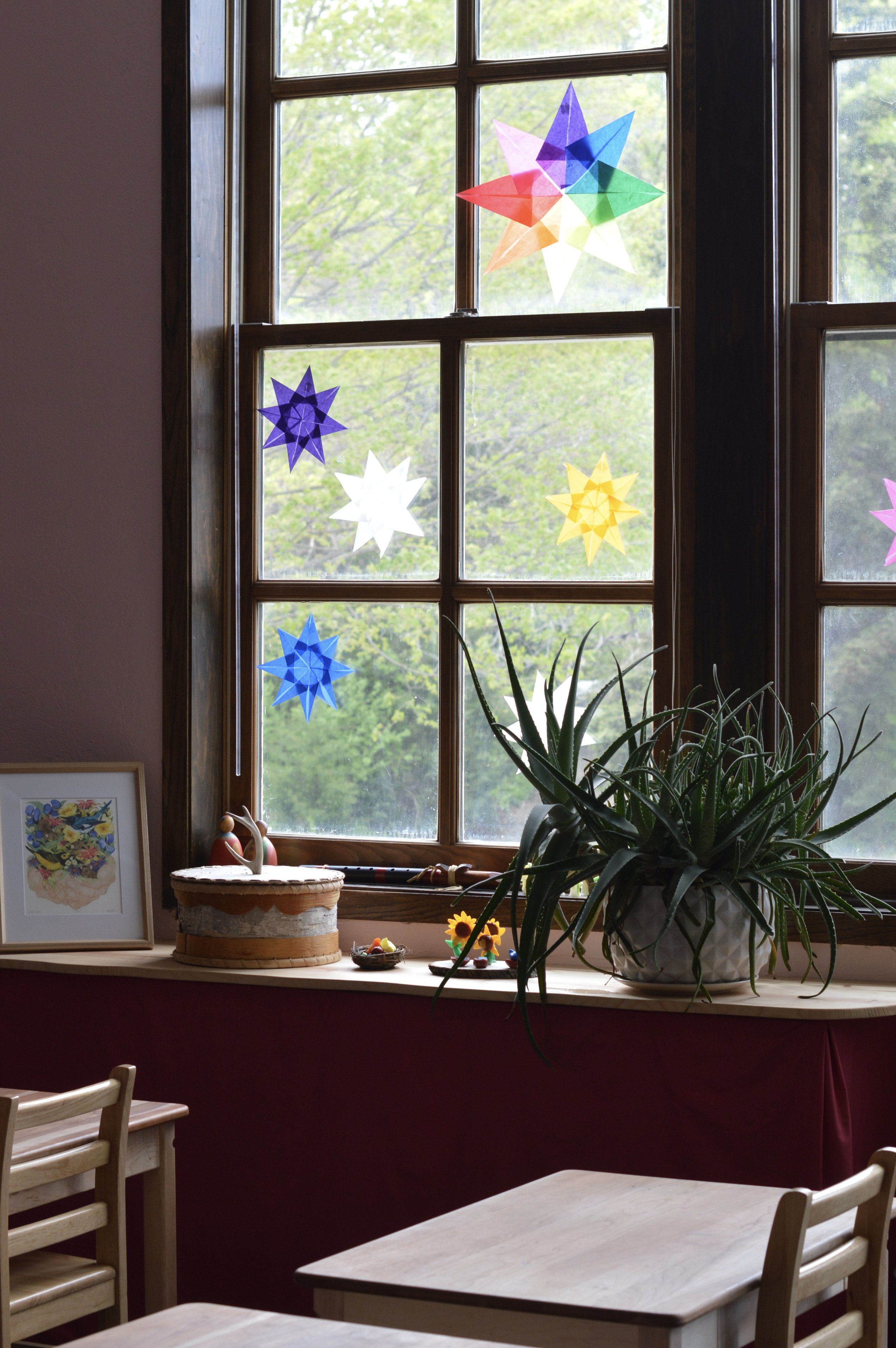
Our Approach
The second-grade child’s day is structured based on a healthy balance of quiet, inward-focused time and periods of activity with an outward focus.
Weekly Rhythm
The weekly rhythm includes a daily morning lesson, work in the garden, meditation, poetry, singing, watercolor painting, beeswax modeling, pentatonic flute, and free, unstructured play in nature. Our location has plenty of beautiful outdoor space, raised garden beds, and nearby parks. Meadowlark’s curriculum has a special focus on nature and our place in the natural world. Through time spent outdoors, observing, gardening, and seasonal festivals, we explore our connection to the natural world, our place in it, and responsibility to it. It is not a hurried curriculum stressing the child with memorization of facts but rather one that lays a deep foundation for learning by engaging the child on all levels of their being. Morning begins with the main lesson which includes circle time with movement, songs, and recitation, followed by story time, and finally writing or bookwork. The early lessons are mainly pictorial, increasing in content as the child’s capacity for concentration grows. Main lesson is followed by snack and free play, painting, handwork, gardening, or beeswax modeling, then lunch, a long outdoor play time, community work, story, rest, and dismissal.
main lesson
Main lessons will cover the introduction of consonants and vowels through stories that embody the quality of the letters, learning word families, writing the letters, copying words and short sentences, reading words and short sentences, and writing short sentences. Numbers will be introduced through their qualities and experienced through movement, manipulatives, and imaginative stories. First grade students will learn roman numerals, the four main math functions, counting to 100, writing numbers 1-50, how to identify even vs. odd numbers, and learn to solve simple math problems. The Main Lesson Book is a hand-crafted, hand-illustrated book, written by each child that covers the subjects studied in class. By creating their own “textbooks,” students move beyond being passive recipients of an educational program to being active collaborators in their own learning.
Curriculum At-a-Glance By Subject
Form Drawing
Straight and curved lines
Standing forms
Running forms
Spanish
Immersion through speech; presentation of vocabulary through stories
Recitation of poetry, songs, and stories; accompanying movement and gestures
Comprehension and speech practiced: size, color, number, how many, what is it, I have, and identifying commands
Handwork
Make knitting needles
Cast-on, the knit stitch, decreasing, bind-off, and sewing
Social Studies
Mythologies of global cultures and folk tales from around the world
Descriptions of various cultures and environments through oral storytelling
Language Arts
Pictorial introduction of the alphabet
Handwriting: upper and lower case letters
Oral storytelling
Recitation of poetry and verse
Class play: group choral form
Mathematics
Roman Numerals from I to XII
Odd and even numbers
Four mathematical processes: addition, subtraction, multiplication, division
Science
Stories of the seasons and the natural world
Exploration of nature
Gardening: tending a plot, growth cycles of plants, tending life from seed to harvest, and gardening stories


